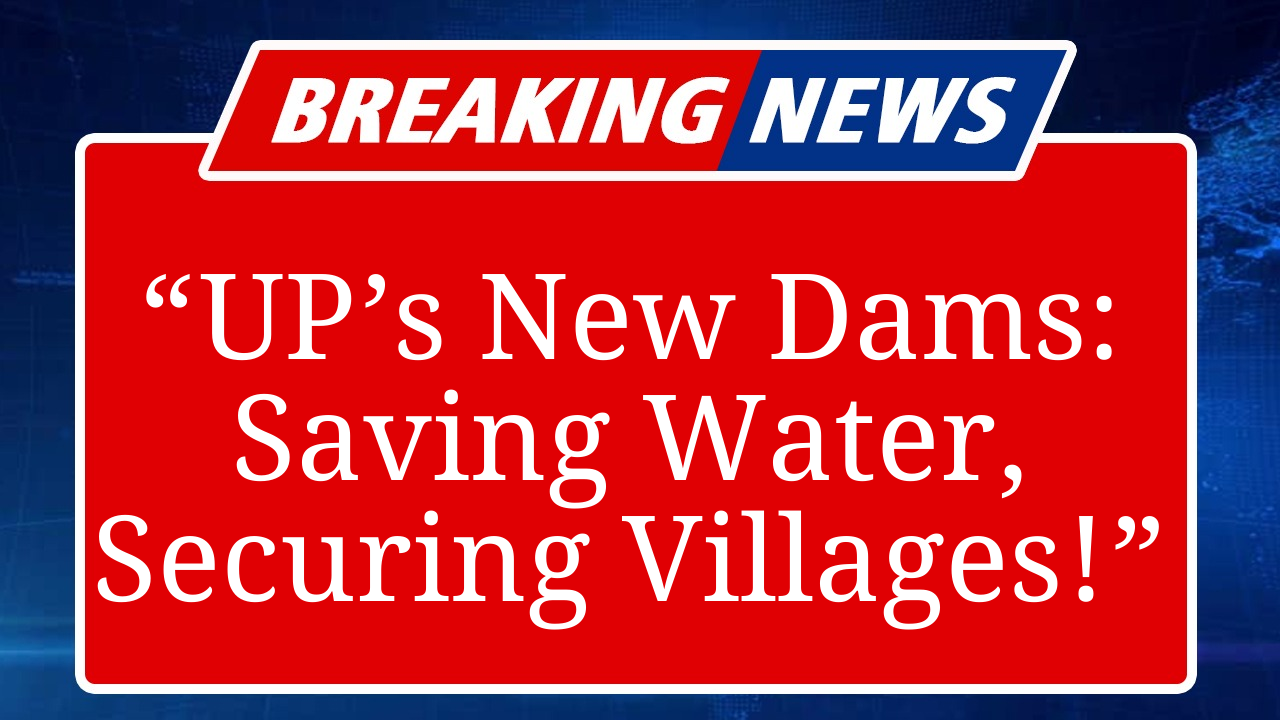UP’s ambitious dam projects aim to transform water conservation in rural areas, addressing water scarcity and supporting agriculture. With innovative designs and community involvement, these initiatives promise sustainable water management, flood control, and improved livelihoods for villages, tackling India’s pressing water crisis head-on.
UP’s New Dams to Revolutionize Rural Water Security
Uttar Pradesh, India’s most populous state, is taking bold steps to address its water crisis through a series of new dam projects targeting rural areas. Launched as part of the state’s broader water conservation strategy, these initiatives aim to ensure sustainable water supply for agriculture, domestic use, and flood mitigation in water-stressed villages. With groundwater levels depleting rapidly and monsoon patterns becoming erratic, these dams are a timely intervention to secure water for millions.
In 2025, the Uttar Pradesh government, in collaboration with the Jal Shakti Ministry, has prioritized constructing small and medium-scale check dams across districts like Chandauli, Mirzapur, and Sonbhadra. These dams, designed to harness rainwater and recharge groundwater, are strategically located in areas prone to drought and flooding. For instance, the Baheliyapur check dam in Chandauli, though recently damaged due to heavy rainfall, underscores the need for robust infrastructure to manage water flow effectively.
The state’s irrigation department has reported that over 50 new check dams have been proposed under the “Jal Sanchay Yojana,” a scheme inspired by successful water conservation models like Maharashtra’s Jal Yukta Shivar. These dams aim to store monsoon runoff, prevent soil erosion, and provide irrigation for over 10,000 hectares of farmland. In districts like Jaunpur, where heavy rains recently forced school closures, these projects also focus on flood control by regulating water release from reservoirs.
Community involvement is a cornerstone of these projects. In villages like Kadwanchi in Maharashtra, similar initiatives have transformed arid regions into agricultural hubs through collective efforts like desilting streams and building farm ponds. UP is adopting this model, encouraging villagers to participate in dam maintenance and rainwater harvesting campaigns. The Nalanda district’s success with the “Jal Sanchay” project, which earned a national award for constructing check dams and reviving traditional water bodies, serves as a blueprint.
However, challenges remain. Recent flooding in Chandauli and Mirzapur, where 60 villages were inundated due to water releases from overflowing dams like Chandraprabha and Ahraura, highlights the need for better dam management and early warning systems. Local farmers, like Mrityunjay Yadav in Bhabhaura, faced significant losses when floodwaters destroyed crops and poultry farms. The state has responded by deploying repair teams and promising compensation, but experts emphasize the importance of integrating advanced hydrological monitoring to prevent such incidents.
The UP government is also exploring nature-based solutions, inspired by global models like China’s Sponge City, which recycles 70% of rainwater. By combining traditional methods like the ahar-pyne irrigation system with modern engineering, these dams aim to enhance water security without the environmental costs associated with large-scale projects. Critics, however, caution that without addressing siltation and climate-driven rainfall variability, the long-term efficacy of these dams could be compromised.
The initiative has garnered support from local leaders and environmentalists. “These dams are not just about storing water; they’re about empowering villages to manage their resources sustainably,” said Abhinav Goyal, a district collector overseeing similar conservation efforts. With plans to map all water conservation structures except large dams, the state aims to create a comprehensive water management framework, ensuring every drop counts.
As Uttar Pradesh battles water scarcity, these new dams represent a beacon of hope for rural communities. By prioritizing local needs and sustainable practices, the state is setting a precedent for water conservation that could inspire other regions in India facing similar challenges.
Disclaimer: This article is based on recent news reports, government announcements, and water conservation studies. Information is sourced from credible outlets like Times of India, Reuters, and SANDRP. Data on dam projects and their impacts may evolve, and readers are advised to verify details with official sources.

